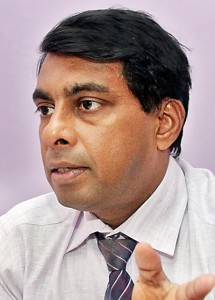News
Are some of the road and rail accidents due to diabetic retinopathy?
Every single day, Sri Lankans hear news of horrific accidents, involving different types of vehicles, leading to death and injury.

Elephant deaths on the railtrack
Have we checked whether they have eye problems in addition to the usual reasons of drinking and driving, speeding or falling asleep at the wheel?
This is the pertinent question being asked by Consultant Physician Dr Waruna Gunathilaka, attached to the premier National Eye Hospital, Colombo.
For, he has carried out a study at the National Eye Hospital, collecting data on diabetes-related eye complications and stumbled on disturbing findings.
There have been no big studies in Sri Lanka on this important issue, says Dr Gunathilaka, stressing that there was not much data on diabetic retinopathy.
Wanting to explore this yet unexplored area, he has in the past six months focused on drivers who had vision issues and believes this is the first study on diabetic retinopathy in drivers. In this on-going study, he had picked a random sample of 565 patients who came to the National Eye Hospital, 541 of whom were men and 24 women. He was assisted in the data collection by Nursing Officers Vajira and Madhubashini of the National Eye Hospital’s Diabetes Education Unit.
“These patients were professional drivers. Their job was driving,” says Dr Gunathilaka, pointing out that of the 565 patients, 133 were diagnosed with diabetic retinopathy. Some of them were school van drivers taking children back and forth.
The types of vehicles the 565 patients drove were: trishaws – 165; cars – 161; motorcycles – 123; vans – 63; other categories (trains, containers etc) – 27; lorries – 14; and buses – 12.
Before focusing closely on accidents the 133 patients with diabetic retinopathy had been in, he says that this condition causes changes to the retinal blood vessels which could lead to these vessels bleeding or leaking fluid, distorting the person’s vision.
Diabetic retinopathy is the most common cause of vision loss among people with diabetes and a leading cause of blindness among working-age adults, he says, adding that night vision issues are a well-known complication of diabetic retinopathy.
The study found:
- Of the 133 patients who had diabetic retinopathy, 26 were in the category of ‘severe grade’.
- Sixty-eight had been involved in accidents – 5 to 6 major accidents and others minor accidents.
- In the total sample of 565 patients, 247 had defective vision. Of this group, 239 had night vision issues with 29 having diabetic retinopathy.
- Among the 565 who came within the study, 261 had their licences renewed, among whom 31 had diabetic retinopathy.
Dr Gunathilaka speculates whether the large number of elephant deaths in train accidents is due to the drivers having diabetic retinopathy and, in turn, night vision issues which would affect them between dusk and dawn.

Dr Waruna Gunathilaka
While pointing out that in Sri Lanka now many accidents are not being reported to the police as there is on-the-spot insurance, he warned that accident statistics were not the true reflection of what happens on the roads.
He creates the image of ophthalmologists looking into the eyes of the patients during routine check-ups, but no one really knowing how people see the world through impaired vision.
When driving licences are being issued, the potential driver’s visual acuity is checked. The visual acuity test is an eye examination during which a person is checked to determine whether he/she sees the details of a letter or number on a chart, from a specific distance.
Usually, the legal requirement to obtain a driving licence is the ability to read the lines above the last two lines with tiny letters/numbers on this chart. “But we found that some of the drivers could not even see the bigger-lettered lines above those last two lines,” he says.
How many people, including drivers, are affected by such diseases as diabetic retinopathy in a society which is gripped by a disastrous epidemic of non-communicable diseases (NCDs) including diabetes, no one knows. As such, it is essential to carry out mass screening, even expediting the process by using artificial intelligence, adds Dr Gunathilaka.

